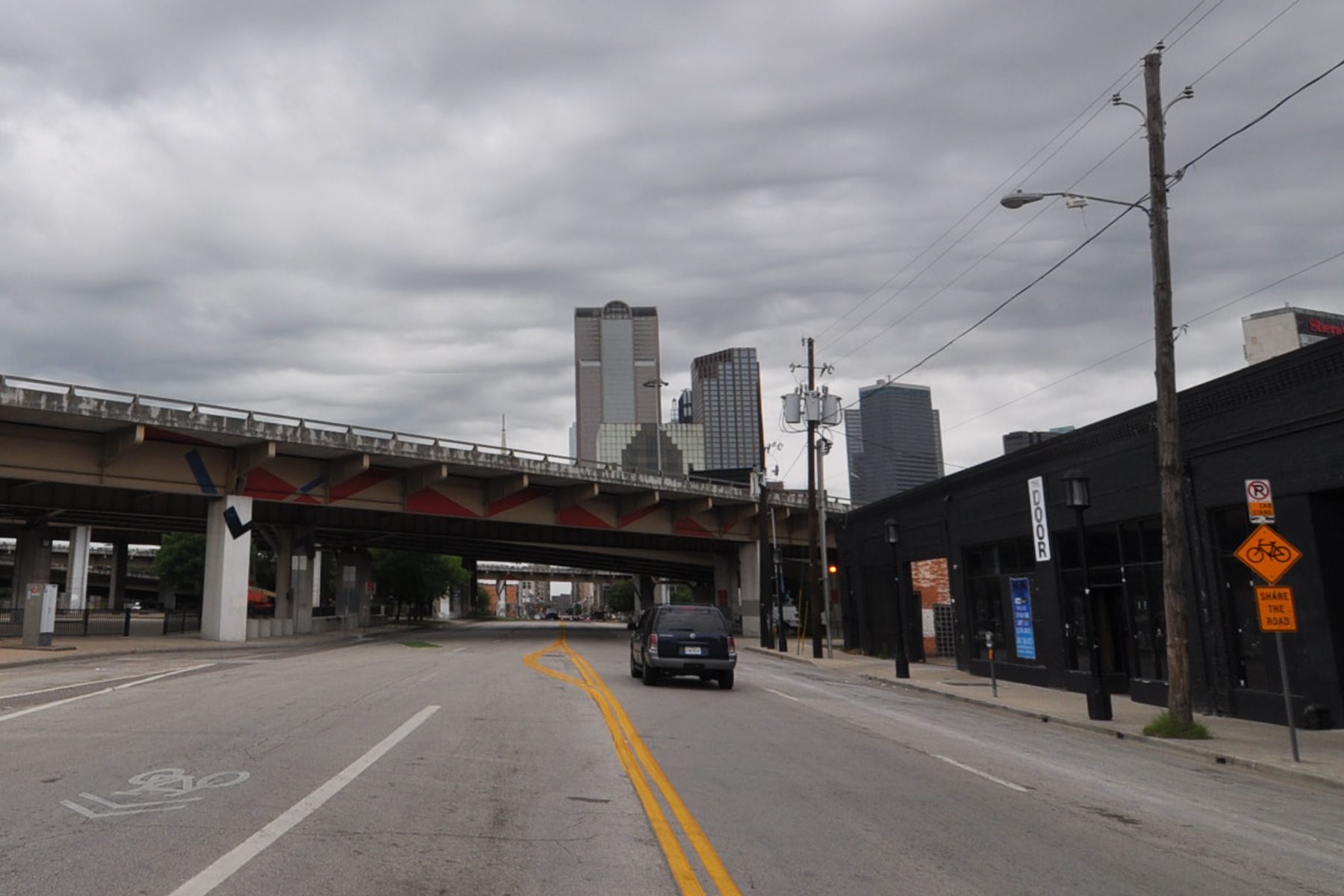Displacement, pollution, and increased congestion are all part and parcel to highway expansions. It’s a drum we’ve been beating in this space for years, and now I’d like to direct you to this Texas Observer feature, because they get it. In studying highway projects in Houston (the expansion of Interstate 45), Dallas (the existential question posed to officials as to whether we should rehab it or remove 345), and Austin (bringing down Interstate 35 between downtown and the east side), writer Amal Ahmed shows that elevated freeways are flirting with schools and swallowing homes in Houston.
In Dallas, she uses Deep Ellum as the example. Once 345 went in where the Central Track Railroad line was, the community was broken and physically separated from downtown. There are other examples, too, like Interstate 35 and the 10th Street Historic District, and Interstate 30 that cut South Dallas off from Old East Dallas. As you know, there’s a movement to tear out 345, and TxDOT and the city of Dallas are working together to improve safety and connectivity by possibly burying and adding pedestrian crossings to Interstate 30. There’s also the environmental aspects: a big study came out last week finding that all the pollution from vehicles causes damage that is similar to smoking a pack of cigarettes a day.
One of the more interesting tidbits from the Observer piece is a quote from a director at Rice University who wrote the book on Houston’s freeway building:
He also points out that it’s much easier to add to an existing freeway than to reimagine the mobility of an entire metro area. That’s how highways (and their expansion) become received wisdom, passed down from one generation of urban planners to the next. And it’s why the fundamental function of a highway hasn’t changed much since the system was first imagined in the mid-20th century: shuttling newly minted suburbanites back and forth from the city center. “The logic of highway development is still underwriting that arrangement,” Shelton says.
In May, I wrote a column about the planning for Interstate 30, and how communication between the state and city had gotten back on track after breaking down. Shelton’s quote is an important reminder of why timing matters. These are hard, complex things, and the DNA of nearly every level of government is a double helix of concrete: when traffic gets bad, build wider. But as the Observer notes, that doesn’t always work. When Houston stretched I-10 to 23 lanes, it actually made commutes worse. That’s induced demand; build it and they will come, as the saying goes.
But in cities that have replaced freeways with boulevards, or just generally gotten rid of the giant roads, traffic has found other ways. Dallas is also where TxDOT first explored ways to redesign freeways to improve economic development and safety in the neighborhoods that they tore apart. That’s called CityMAP, and it’s a guiding document for how the city and the state consider these projects in the future.
Today in a City Council briefing, Transportation Director Mike Rogers gave an update about the city’s first-ever mobility plan. The $1.2 million document should be ready by the year’s end, he said. The city is currently surveying communities to see their concerns and desires as it comes to transportation. Congestion is an easy frustration. May our city leaders continue to recognize that there are other ways to fight it besides adding onto freeways.





